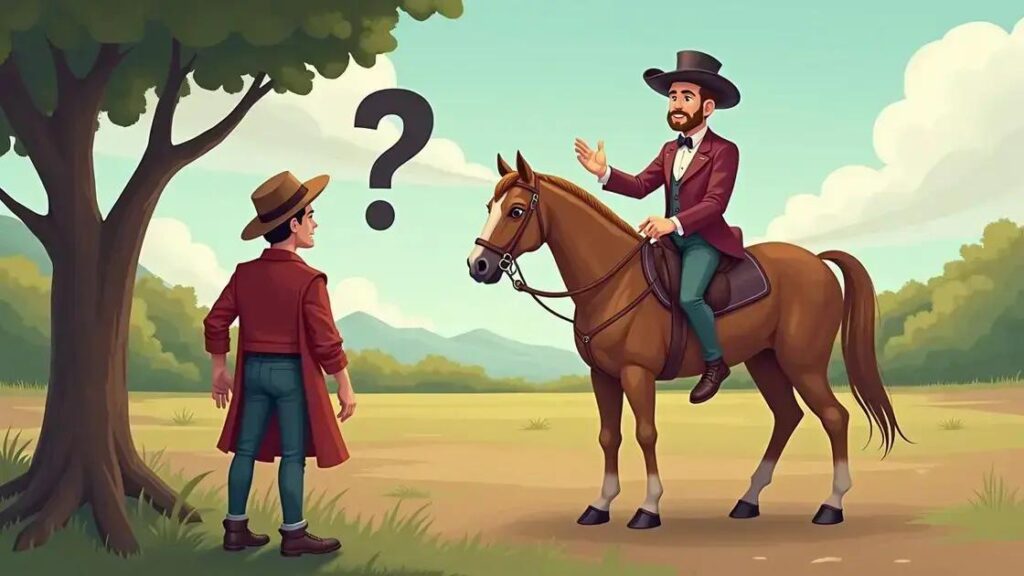The Horse Trick is an entertaining performance showcasing trained horses executing various tricks. While many myths exist about these performances, such as the belief that horses can naturally perform tricks or that all tricks are dangerous, real stories highlight the dedication and skill involved in training. To avoid scams associated with horse tricks, look for transparency, realistic claims, and evidence of experience from trainers.
Ever come across an intriguing title like “Is the Horse Trick a scam?” In recent years, this phenomenon has swept across the internet, capturing the attention of many. This article dives deep into the heart of the horse trick mystery, examining its origins, popularity, and the myths associated with it. As we explore the truth about the horse trick, we’ll also discuss how to recognize scams related to it and share real-life experiences from those who have encountered it, providing readers with a comprehensive understanding.
What Is the Horse Trick?
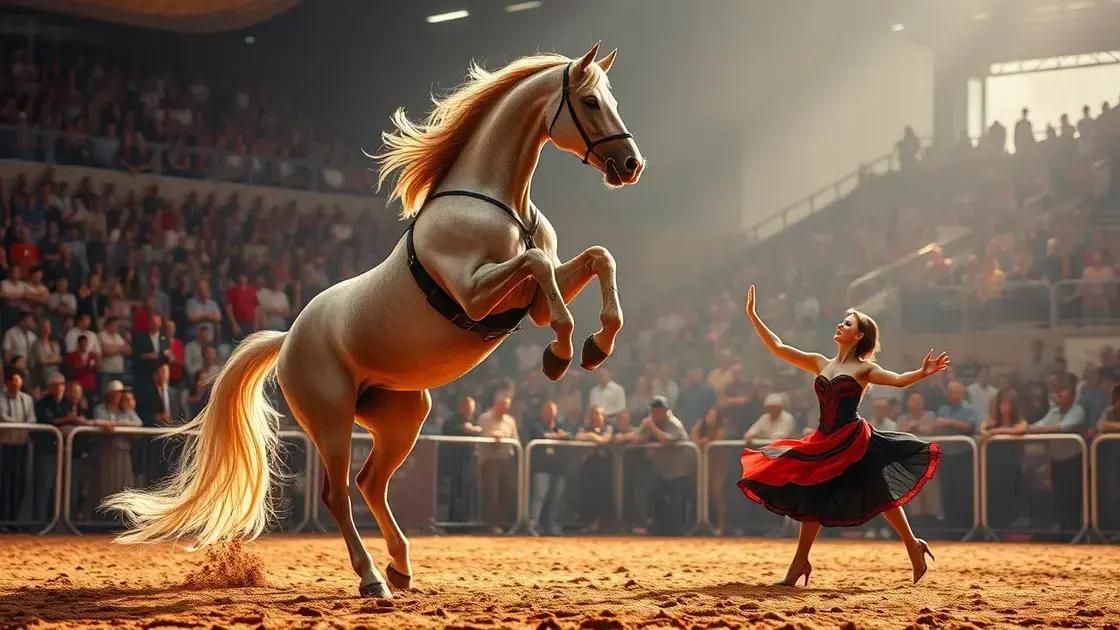
The Horse Trick is a captivating phenomenon that involves a seemingly impossible trick or illusion involving horses. It often involves trained horses performing tasks that astonish audiences, making them question the boundaries of reality. The term can refer to various performances but is most commonly associated with practices that capitalize on illusion and misdirection.
This trick often appears in shows or performances, where trainers showcase the remarkable abilities of their horses. What makes it intriguing is the combination of horseback riding skills, training, and the magical elements that keep audiences on the edge of their seats.
At its core, the Horse Trick plays on the viewer’s expectation and understanding of what is possible with these large, powerful animals. Typically, it is executed by skilled professionals who have invested countless hours in training their horses to respond to commands and perform choreographed actions, enhancing the overall effect of the trick.
Understanding the Horse Trick’s mechanics is essential for distinguishing it from potential scams. It relies not only on the horse’s capability but also on the trainer’s skill and presentation. These performances often contain layers of complexity, making them seem more magical than they actually are. In exploring this fascinating art form, we can appreciate the dedication required to execute such intricate acts.
Types of Horse Tricks
There are various types of tricks that can be classified under this umbrella, from simple commands to elaborate routines. Typically, these include:
- Jumping over obstacles – Horses performing leaps over barriers is a common and impressive trick.
- Ball playing – This involves horses interacting with large balls, showing their intelligence and playfulness.
- Dance routines – Coordinated movements between horse and rider that create a captivating performance.
- Even simple tricks, like bowing or waving, can leave audiences amazed.
While some tricks may appear straightforward, the training and coordination involved are anything but easy. Each performance captivates spectators, leading to widespread interest in the art of horse tricks.
Common Myths About the Horse Trick
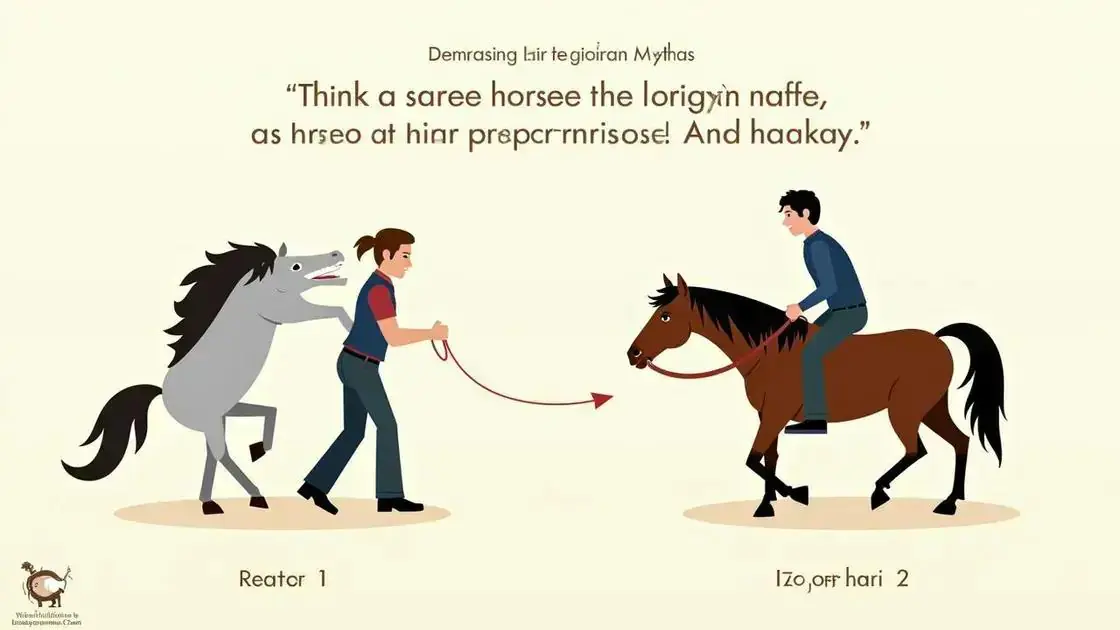
Many people have misconceptions about the Horse Trick, often leading to confusion and skepticism. Here are some common myths associated with this fascinating phenomenon:
1. Horses Can Naturally Perform Tricks
One major myth is that horses are born with the ability to perform tricks. In reality, training is essential to teach a horse how to perform these acts. Handlers spend countless hours building a bond with their horse and teaching commands.
2. All Horse Tricks Are Dangerous
Another misconception is that horse tricks are inherently dangerous. While some tricks are challenging, trained professionals prioritize safety for both the horse and the rider. They often use protective measures and gradually teach horses to ensure their well-being.
3. Tricks Can Be Learned Quickly
Many believe that once a horse is introduced to a trick, it can master it in no time. In truth, training requires patience and consistency. Horses may need weeks or even months to adequately learn a particular trick.
4. Horses Do It For Treats Only
While positive reinforcement with treats plays a role, it’s a myth that horses are solely motivated by food. Horses enjoy working with their trainers and thrive on the bond they share. This bond is as important as any reward.
Understanding these myths can clarify misconceptions surrounding the Horse Trick. Recognizing the effort, dedication, and intricacies involved can lead to a deeper appreciation for this art form.
How to Spot a Scam in Horse Tricks
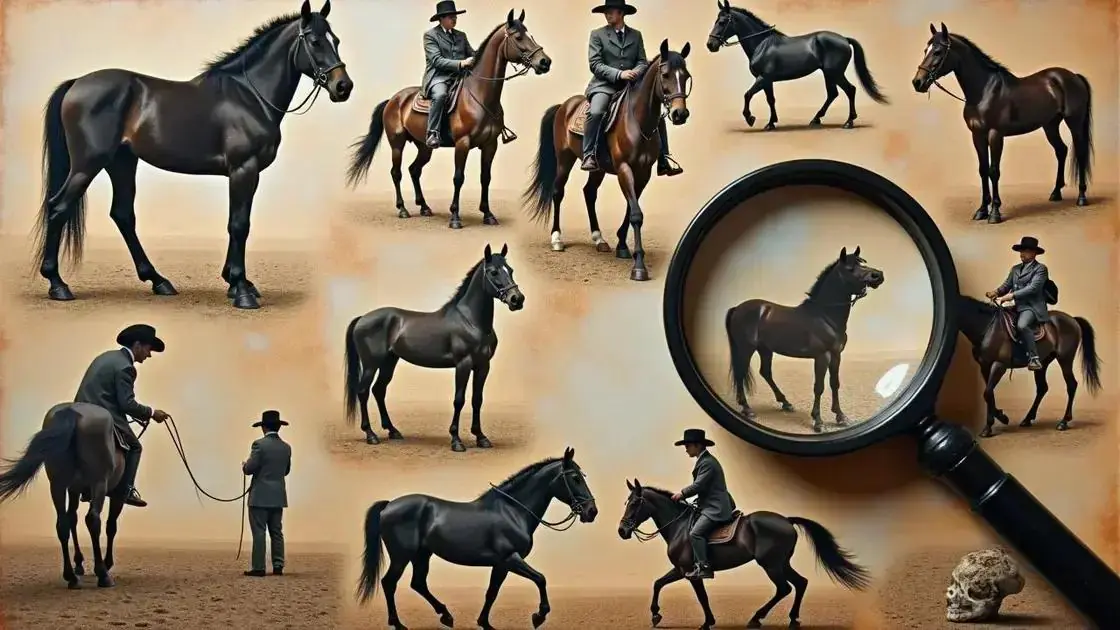
Recognizing a scam in horse tricks can be challenging, especially for those unfamiliar with how legitimate performances work. Here are some signs to help you spot a scam:
1. Unrealistic Claims
If a performer claims that their horse can do the impossible in just a few minutes, this is a red flag. Genuine trainers emphasize patience and training time. Always be skeptical of extraordinary claims.
2. Lack of Transparency
Scammers often avoid explaining how the tricks are done. Legitimate trainers are usually happy to share the details of their training methods. If the performer is evasive about their process, it may indicate a scam.
3. No Evidence of Experience
If a performer has no background or history of credible performances, be cautious. Check for reviews, testimonials, or performances that show their skills. Watch for signs of credibility before trusting them.
4. High Fees with No Clear Explanation
Scams often involve exorbitant fees for viewing a performance or signing up for lessons with unclear benefits. Always verify the pricing and what it covers. Legitimate performances will have transparent pricing structures.
5. Pressure to Act Quickly
If someone pushes you to decide quickly on purchasing a ticket or signing up for a class, be wary. Scammers use high-pressure tactics. Take your time and do your research before committing.
By keeping these tips in mind, you can better protect yourself from falling into a trap. Knowing how to identify potential scams ensures a more enjoyable experience with horse tricks.
Real Stories: Experiences with Horse Tricks
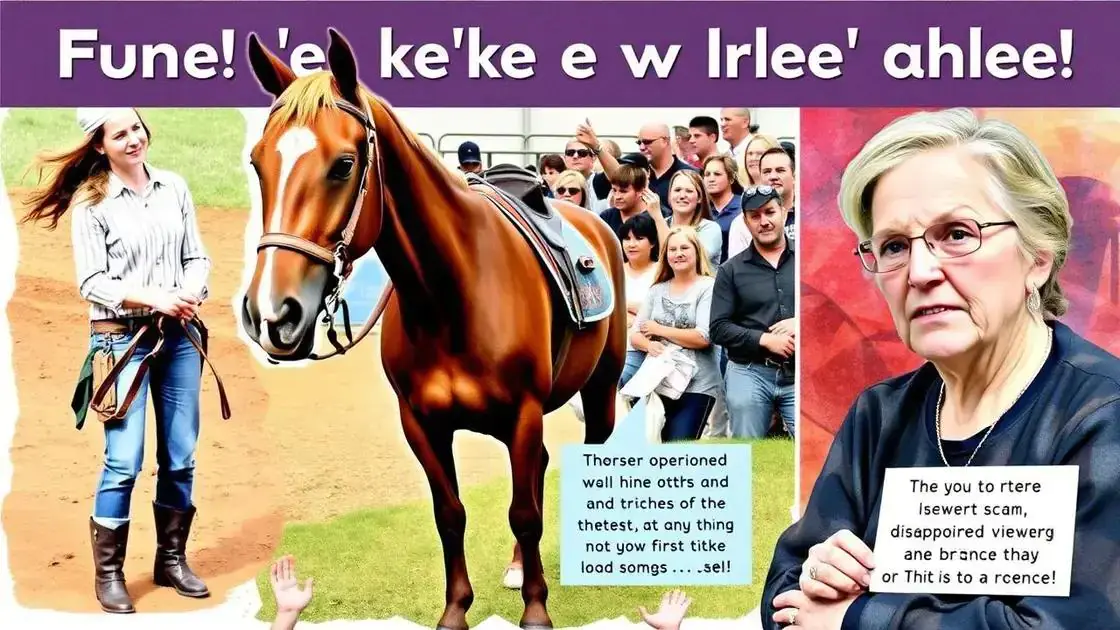
Gathering real stories about horse tricks can offer valuable insights into the experiences of both performers and audiences. Here are some firsthand accounts:
1. Emily’s First Performance
Emily, a young trainer, shared her experience of performing in front of a live audience for the first time. “I was so nervous! But once my horse, Daisy, and I began our routine, I felt a rush of excitement. Daisy performed perfectly, and the crowd was amazed. It made all the long hours of training worth it!”
2. A Skeptical Viewer
John, who attended a horse trick show, had his doubts initially. “I thought it was all just a trick, but seeing those horses perform live changed my perspective. The bond between the trainer and their horse was clear. It was more than just tricks; it was a display of trust and skill!”
3. Real Challenges
Lisa, an experienced horse trainer, talked about the challenges of mastering new tricks. “Some tricks took weeks to teach because the horses had to build trust. One time, we almost gave up on a trick, but after sticking with it, our hard work paid off during a show. It was rewarding to see the crowd cheer for our efforts!”
4. A Disheartening Scam Experience
Mark recounted his disappointment after falling for a scam. “I paid a hefty fee to watch a ‘world-famous’ trainer. The performance was lackluster, and I realized too late that it was all an act. I learned to do deep research before attending another show!”
These stories reflect the range of experiences tied to horse tricks, revealing the joy and challenges faced by performers and spectators alike.
In Summary: Understanding Horse Tricks
The horse trick phenomenon captivates audiences and showcases the incredible bond between trainers and horses. By exploring what horse tricks are, debunking common myths, spotting potential scams, and sharing real stories, we can appreciate this unique art form more deeply.
Recognizing the dedication and effort behind each performance adds to our admiration for the trainers and their horses. Whether you are an eager spectator or a potential participant, being informed can enhance your experience.
With a blend of skill, patience, and passion, horse tricks continue to elevate entertainment while reminding us of the beauty of human-animal connections.
FAQ – Frequently Asked Questions about Horse Tricks
What exactly is the Horse Trick?
The Horse Trick is an entertaining performance where trained horses execute various tricks and maneuvers, showcasing their skills and the bond with their trainers.
Are horse tricks dangerous for the animals?
While some tricks can be challenging, professional trainers prioritize safety and well-being, ensuring that both horses and trainers are protected during performances.
How long does it take to train a horse for a trick?
Training a horse for a trick can vary widely, taking anywhere from weeks to months, depending on the complexity of the trick and the horse’s individual capabilities.
How can I spot a scam related to horse tricks?
Look for unrealistic claims, lack of transparency from the trainer, excessive fees, and high-pressure tactics urging immediate decisions to help identify scams.
What are common myths about horse tricks?
Some common myths include the belief that horses can naturally perform tricks, that all tricks are dangerous, and that training can be done quickly.

